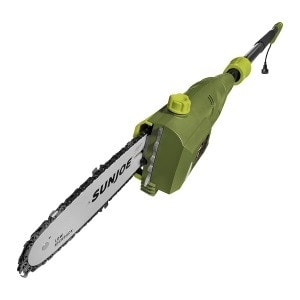6 Different Types of Chainsaws & Their Uses (With Pictures)
-

- Last updated:
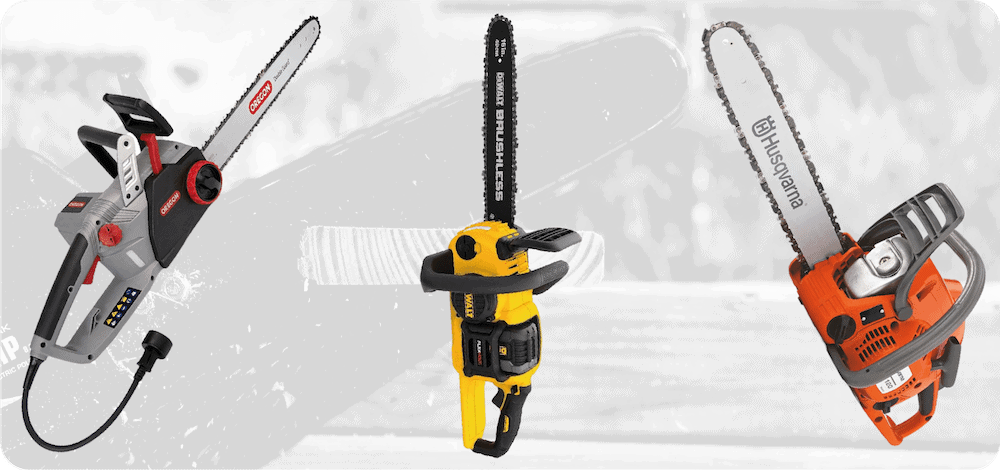

To some people, chainsaws are mostly useful for the bad guys in horror movies when they feel like axes and machetes are too low-tech. For others, they’re a vital part of everyday life; chainsaws can chop wood, clear brush, remove major obstructions, and lop unhealthy limbs from trees.
Yet when you’re in need of a chainsaw, it can be hard to tell the difference between all the various kinds on sale. If you’ve found this article, chances are you have land to manage or trees to take care of and need the right chainsaw for the job. Keep this guide on-hand while you shop, and you’ll be able to easily distinguish between the six types of chainsaws: manual, battery-powered, corded electric, gas-powered, pole, and pneumatic.

The 6 Different Types of Chainsaws
1. Manual / Pocket Chainsaws
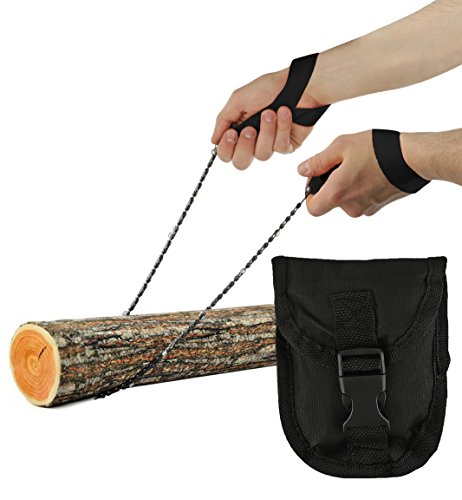
A pocket chainsaw consists of a chain with bladed teeth attached to a handle at either end. To use one, wrap it around whatever you’re trying to cut through, then quickly pull it back and forth. It’s as exhausting as it sounds and takes forever, but it’s also emission-free, nearly silent, and incredibly portable.
You can buy good manual chainsaws from a store, but it’s also a breeze to DIY one. You can attach a grip to either end of a chainsaw chain, and you’re ready to go.
What it’s used for:
Primarily small cutting jobs such as firewood for a campfire
- Easy to carry around
- Cheap, especially if you make one yourself
- Requires no power
- Quiet
- Difficult to use
- Takes a long time
- Only suitable for small jobs
2. Battery-powered Chainsaws
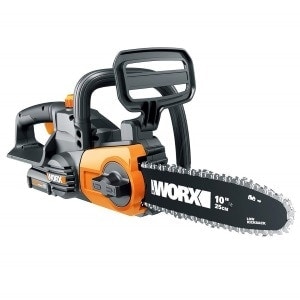
The battery life of a rechargeable chainsaw varies between brands. It also depends on how much you use it at a time, but generally, you won’t be able to spend a few hours in the field before heading home to recharge. Battery-powered chainsaws have less power, making them best for brush-clearing jobs in places where an extension cord won’t reach.
Side note: if you hear someone talking about a “cordless” chainsaw, they almost always mean battery-powered, even though gas and manual chainsaws also don’t have cords.
What it’s used for:
Small to mid-sized cutting jobs anywhere you travel
- No gas fumes
- 100% portable
- Quiet
- Limited battery life
- Less power
3. Corded-electric Chainsaws
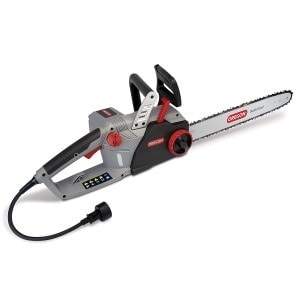
Electric saws are best for jobs near the home. On a 1-acre property, you can probably run an extension cord anywhere you need to go. You’ll need to lug a generator or rechargeable battery to work in a remote location. At that point, you might want to go cordless.
What it’s used for:
Small to mid-sized cutting jobs close to home or a power source
- Cut with more power
- Easy for beginners to use
- Limited to cord length
- Only effective up to medium-sized cuts
4. Gas-powered Chainsaws
Gas-powered chainsaws are the most powerful and are used by professionals and homeowners. This kind of chainsaw might be the most familiar to people new to landscaping. They run on a gas-powered two-stroke engine that needs to be lubricated, like a car’s. Starting them requires priming the gas tank and pulling on a starter cord.
Gas-powered chainsaws are far and away the most powerful and can cut through wood of almost any size. There are downsides, however: the saws are bulky, smelly, and loud. Ear protection and upper-body strength are prerequisites for using one safely.
A gas chainsaw is cordless and can be taken anywhere. They can only run as long as there’s gas in the tank, but it’s sometimes easier to bring an extra gas can than several lithium-ion batteries.
What it’s used for:
All-purpose, heavy-duty cutting of lumber and large trees
- Most powerful & readily available chainsaw
- Portable
- Loud
- Emits gas fumes
- Heavy
- Can be a hassle to start
5. Pole Chainsaws
Pole saws are not technically considered chainsaws, but they work the same way. Some pole saws are just handsaws or reciprocating saws with extended handles. However, since the most popular pole saw designs are based on chainsaws, we thought they’d be worth mentioning.
A pole saw is a chainsaw on a stick used for cutting off tree branches that would otherwise be hard to reach. They’re great for removing dangerous limbs that might fall and hurt someone if left unchecked. Pole saws are smaller and less powerful than standard chainsaws to lessen the strain on the pole.
Most pole saws include triggers that allow you to operate them from the other end of the handle; some also let you oil the blade this way. Like regular chainsaws, they can run on corded power, gasoline, or rechargeable batteries.
What it’s used for:
Pruning small to mid-size trees and branches
- Great for reaching high limbs
- Multiple options for shape and power
- Only useful in specific situations
- Not as powerful as handheld saws
6. Pneumatic Chainsaws

A sixth type of chainsaw can be even more powerful than a gas chainsaw, without as many moving parts. We’ve mentioned them last because they’re much more common in industrial settings, and landscaping tasks are unlikely to demand a pneumatic chainsaw. Pneumatic chainsaws are purchased directly from the manufacturer, and you won’t find many on Amazon, unfortunately.
They are powered by highly pressurized air pockets. They can build up enough force to make straight cuts in metal and concrete, which makes them useful for construction work. Unlike gas chainsaws, they’re emission-free. Some have mechanisms that deliver water or oil to keep the blade from overheating.
What it’s used for:
Industrial cutting jobs: not for beginners
- Can cut through metal and concrete
- No fumes
- Less likely to break down
- Often contains its own coolant system
- Extremely expensive
- Quieter, but still not quiet
In Conclusion
By now, you’ve seen that each class of chainsaw has its benefits and drawbacks. Buying the right chainsaw is not a search for the “best” but a process of matching the tool to the job at hand. The list below summarizes what kind of task each chainsaw is best at to help you in your search.
- Manual: Pruning small branches, chopping small firewood
- Battery-powered: Pruning and trail-clearing away from power sources
- Corded electric: Small to medium-sized jobs near your home
- Gas-powered: Heavy-duty jobs away from power sources
- Pole: Removing dangerous or unhealthy tree limbs
- Pneumatic: Sawing through concrete and metal
They are all excellent choices for the appropriate size of work and the amperage available. One isn’t necessarily better than another. It depends on what you need it for and your personal preference.
See Also:
- 19 Different Types of Hand Planes & Their Uses (with Pictures)
- 13 Woodworking Tools to Get You Started
Featured Image Credit: Parilov, Shutterstock
Contents

